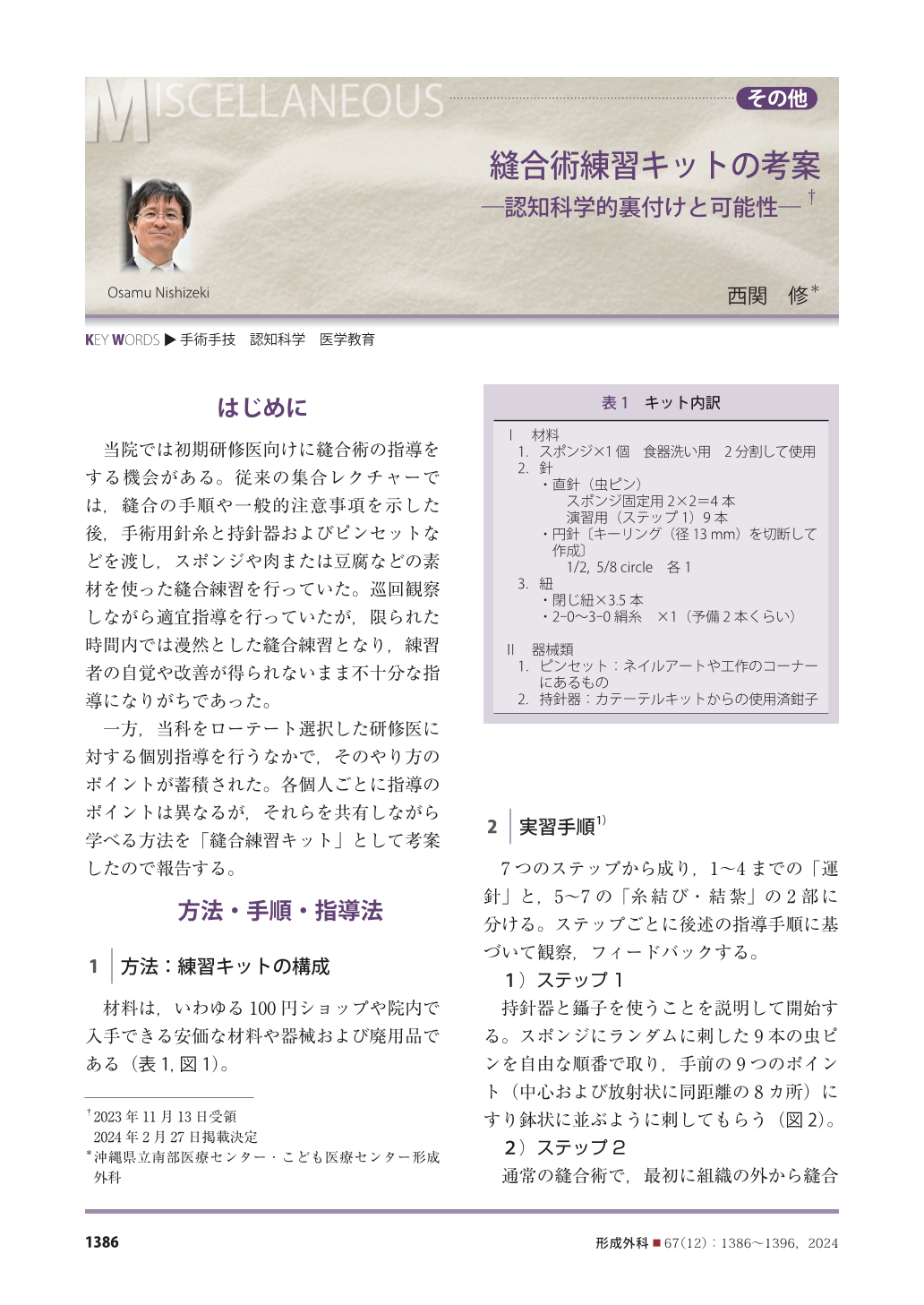Japanese
English
- 有料閲覧
- Abstract 文献概要
- 1ページ目 Look Inside
- 参考文献 Reference
はじめに
当院では初期研修医向けに縫合術の指導をする機会がある。従来の集合レクチャーでは,縫合の手順や一般的注意事項を示した後,手術用針糸と持針器およびピンセットなどを渡し,スポンジや肉または豆腐などの素材を使った縫合練習を行っていた。巡回観察しながら適宜指導を行っていたが,限られた時間内では漫然とした縫合練習となり,練習者の自覚や改善が得られないまま不十分な指導になりがちであった。
一方,当科をローテート選択した研修医に対する個別指導を行うなかで,そのやり方のポイントが蓄積された。各個人ごとに指導のポイントは異なるが,それらを共有しながら学べる方法を「縫合練習キット」として考案したので報告する。
I present a suturing and knot-tying training kit that reinforces the cognitive process of trainees. In suturing part of the kit, the trainees focus on needle-driving and purposely use a blunt needle.
Starting with a simple needle-handling exercise, suturing is performed with the kit separately at each edge of a virtual wound on a sponge and then performed sequentially. In each bite on the edge, the trainees are asked to break down a series of movements into multiples steps and match onomatopoeias to each step.
With the knot-tying part of the kit, trainees can practice hand-tying and instrument-tying. Beginning with hand-tying (including a two-hand technique and a one-hand technique), trainees practice instrument-tying initially using one hand to handle the needle holder, and they are then allowed to use instruments. In each exercise, trainees must be aware of the process of not only making the knot but also sliding and tightening knots, in a step-by-step fashion. During the exercise, trainees experience a cognitive burden that should be considered. It is also explained that a dull needle requires more precise movement. Reflection and verbalization of subdivided procedures in the kit give the trainees the opportunities to be aware of their own habits and misunderstanding and to obtain excellent observation skills for future training.

Copyright© 2024 KOKUSEIDO CO., LTD. All Rights Reserved.


